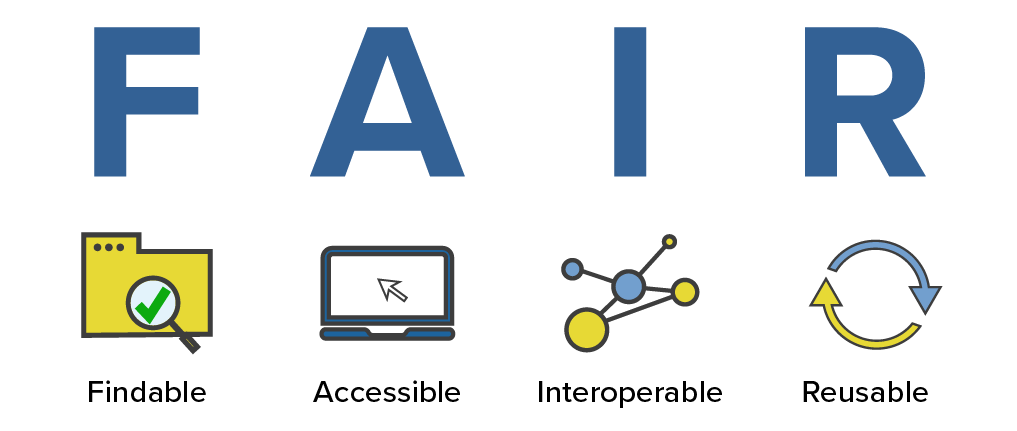FAIR Data
Definition of FAIR Data
To make data easier to share and reuse, researchers and data scientists try to align with the FAIR data principles.
FAIR data is:
- Findable: For data to be findable there must be sufficient metadata; there must be a unique and persistent identifier; and the data must be registered or indexed in a searchable resource.
- Accessible: To be accessible, metadata and data should be readable by humans and by machines, and it must reside in a trusted repository.
- Interoperable: Data must share a common structure, and metadata must use recognized, formal terminologies for description.
- Reusable: Data and collections must have clear usage licenses and clear provenance, and meet relevant community standards for the domain.
Exercises
Which is the main FAIR principle demonstrated by the below practices?
- Describing the subjects in a biomedical dataset using Medical Subject Headings (MeSH) or SNOMED.
- Submitting the description of a clinical trial to ClinicalTrials.gov.
- Using a well-known data repository like GenBank or PubChem.
- Clearly stating and posting the usage permissions with a dataset.
Wilkinson, M. D. et al. (2016). The FAIR Guiding Principles for scientific data management and stewardship. Scientific Data, 3, 160018. doi:10.1038/sdata.2016.18
